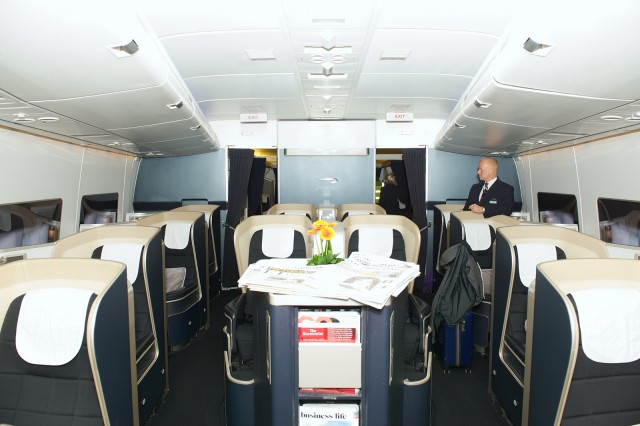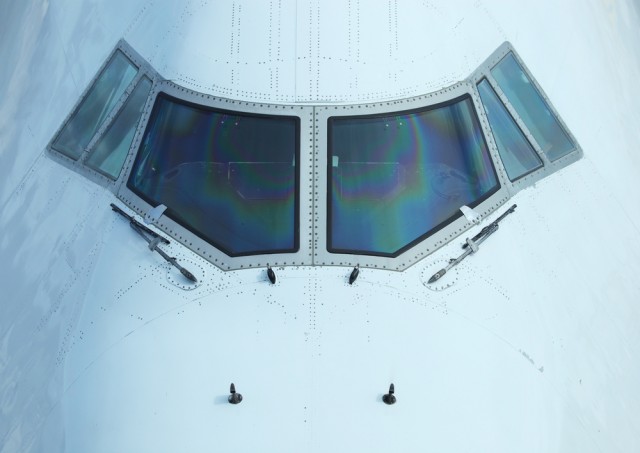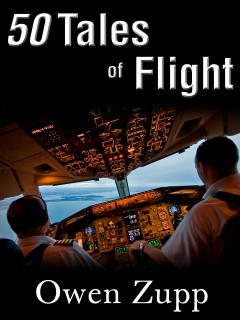Hat-tip to Jon Ostrower on this one…
Browsing Tag: Boeing 747

The First Class cabin of a British Airways 747-436 (G-BNLK) – Photo: Bernie Leighton | AirlineReporter
The entire reason I ended up in Poland was because my travel thought process doesn’t work like that of a normal person. If I see an enticing airfare, on a new airline or a new product, I tend to book it, then figure out the details later.
In this case, I had discovered that British Airways was offering some reasonable fares in their most recent Prime First product across the Atlantic. Better still, one leg (LHR-ORD) was going to be on a 747. In this case, G-BNLK.
I flew to Heathrow from Seattle aboard a G-VIID, a 777-236ER built in 1997. The only advantages I can point out between it and the 744 are the larger overhead bins and slightly more modern AVOD In-Flight Entertainment (IFE) system.
The legs to and from Warsaw were aboard an A320. Club Europe is a bit tight, but the lamb rogan josh was nice. What was not nice was arriving into Terminal 3. The flight arrived early, giving me a two-and-a-half-hour layover. Ample time to change terminals and go to the lounge, right?
Wrong – this is Heathrow! Having to walk half a mile from gate 24 to the transfer bus was the first nuisance. The second was the fifteen minute drive to Terminal 5. This was followed by another aimless walk to the connections desk and finally, Fast Track security. It is “Fast Track” in name only – I was stuck behind at least three passengers who forgot the 3-1-1 rule. Noticing that we were at gate B42, I realized that I would have no time to visit the Concorde Room (British Airways’ first class lounge), which I was really looking forward to.
Boarding was also a little odd. Instead of BA staff looking at IDs, security was inspecting everyone’s travel documents to confirm the ability to enter the United States. Evidently, he was either very suspicious or just slow. I shall stop dwelling on my sub-par airport experience and talk about the aircraft experience, as it was infinitely better.
From the video description from SpeedBirdHD: “The Boeing 747 is a wide-body commercial airliner and cargo transport aircraft, often referred to by its original nickname, Jumbo Jet, or Queen of the Skies. It is among the world’s most recognizable aircraft and was the first wide-body ever produced. Manufactured by Boeing’s Commercial Airplane unit in the United States, the original version of the 747 was two and a half times the size of the Boeing 707, one of the common large commercial aircraft of the 1960s. First flown commercially in 1970, the 747 held the passenger capacity record for 37 years.”
I am guessing probably most people reading this site are well aware of the 747. So less reading, more watching these amazing machines in action .

Flight deck of a Boeing 747. Image from Shutterstock.
This is a guest post written by Owen Zupp, who previously wrote on AirlineReporter.com about the differences between the classic and next generation 737. Today, he is sharing some parts of his new book, 50 Tales of Flight.
The four engines hummed hypnotically through night sky over the Pacific. While Honolulu sat only a matter of miles away, the passengers on board the Boeing 747 were blissfully unaware, curled up beneath their blankets in the darkened cabin. The cabin crew chatted in hushed tones behind the galley’s heavy curtains, planning their shopping strategy when they arrived in San Francisco in a few hours time.
On the flight deck the tone was also hushed so as not to disturb the resting crew at the compartment’s rear. The aircraft continued to track faultlessly along the magenta line on the instrument flight display as the ‘Top of Descent’ indicator and San Francisco edged ever closer down the screen. I called up the latest weather reports through the aircraft’s onboard system and shared them with my fellow pilot. It was set to be a beautiful day, but we ran through all of our available options and fuel status to ensure that all our bases were covered. The first rays of the sun had not yet crept above the horizon but a portion of the upper atmosphere was just revealing the first traces of the new day. A light, faint haze met the curved shadow of the earth’s outline in an arc that spanned the horizon from left to right. The day was encroaching on the stratosphere, but not yet on the earth below. 
The first indication that something special was taking place was not visual in nature. It was the chatter of American crews transiting the busy route between the mainland and Hawaii. ’œCan you see that?’, ’œWhat is it?’ and ’œIs someone starting World War Three?’ The exchanges peaked my interest, but gave no indication of the location or nature of the commotion. Then there was a hint. ’œThere. On the horizon. Down low. It’s brilliant!’ I leaned forward in my seat and peered into the darkness below. Nothing. Resting my arms on the top of the instrument panel, I cupped my eyes with my hands to keep the glow of the instrument panel to a minimum. Then I saw it. A tiny, bright intense light, like the tip of a white hot arc welder. Almost stationary, it was growing larger, ever so slightly.
Seemingly in a matter of seconds it grew from a needle point to a distinct flame, growing both in mass and momentum at a rate that was difficult to comprehend. ’œWhat is it?’ the other pilot echoed my thoughts, equally astounded. Still it grew each and every second to a brighter and more impressive light, seemingly darting skyward. There was no perspective available to gauge distance or offer an idea of its size; just an ever-increasing intensity. Then someone identified the UFO that was captivating every crew aloft that night. ’œIt’s a launch out of Vandenberg.’
A rocket launch from the US Air Force base on the west coast. Now everything made sense. It was hundreds of miles away, but so powerful that it was clearly seen by every aircraft in the flight levels and as it climbed it seemed to grow in speed as its trajectory could now be viewed in profile. Up through the darkness and onwards towards the illuminated upper atmosphere, the rocket would reach the daylight before the night’s end for any of the citizens below. In an absolutely spectacular display of sheer energy, the projectile closed in on the arc between night and day, dark and light. One almost expected it to tear through some barrier between dawn like ripping fabric. And then it virtually did. Just as its furious flightpath penetrated the arc.
Wooomf!
A flash of light that seemingly lit up the night for an instant before a mammoth expanding ring of vapour exploded across the sky. Like those TV documentaries that show the final burst of light across the galaxy from a dying star, such was the scope of this amazing sight. In reality it was the rocket jettisoning a stage of its cylindrical being to leave the ‘sharp end’ to continue its journey into ‘earth orbit’. Bound for space and relieved of much of its load, the remaining portion seemed to accelerate ever-faster and ever-higher. I craned my neck to look skyward and follow the lone beacon as it roared away and finally faded from my mere mortal sight. Wow! I
t had departed as quickly as it had emerged. All that now remained was the ring across the horizon which was now merging with the moisture to develop into a cloud system of its own, like an atmospheric calling card. Its passage had been silent, but its impact was immense. Over the years, I have been very fortunate to see many wonderful sights from this treasured vantage point in the sky, but that pre-dawn morning off the west coast of the United States will always rank very highly. In a matter of minutes, a simple light had transformed the sky and left everyone who had witnessed it breathless.
Meanwhile, the four engines of the 747 still continued to hum hypnotically and the cabin crew chatted while the passengers slept, blissfully unaware. But for this boy from Sydney, Australia, I would never look at the night sky quite the same again.
Read more from Owen in his book: 50 Tales of Flight: Biplanes to Boeings.
A retired Southern Air Boeing 747-200F gets one last chance to almost fly — even without any engines.
From the videos description on YouTube: “This 747 is sitting in a boneyard in Mojave, CA awaiting scrapping. On May 23rd, 2012 the area experienced extreme winds of 70+ miles per hour due to a low pressure zone. Without the weight of its engines, the slightly tail heavy 747 tries to take to the skies one last time. The next day the plane was found to have also rotated about 45 degrees from its original position. The same wind storm damaged many rooftops, cut power and sent huge clouds of sand and dust billowing into the sky. Mojave will occasionally experience this type of wind storm due to geography.”
Thanks Allen for pointing this one out!